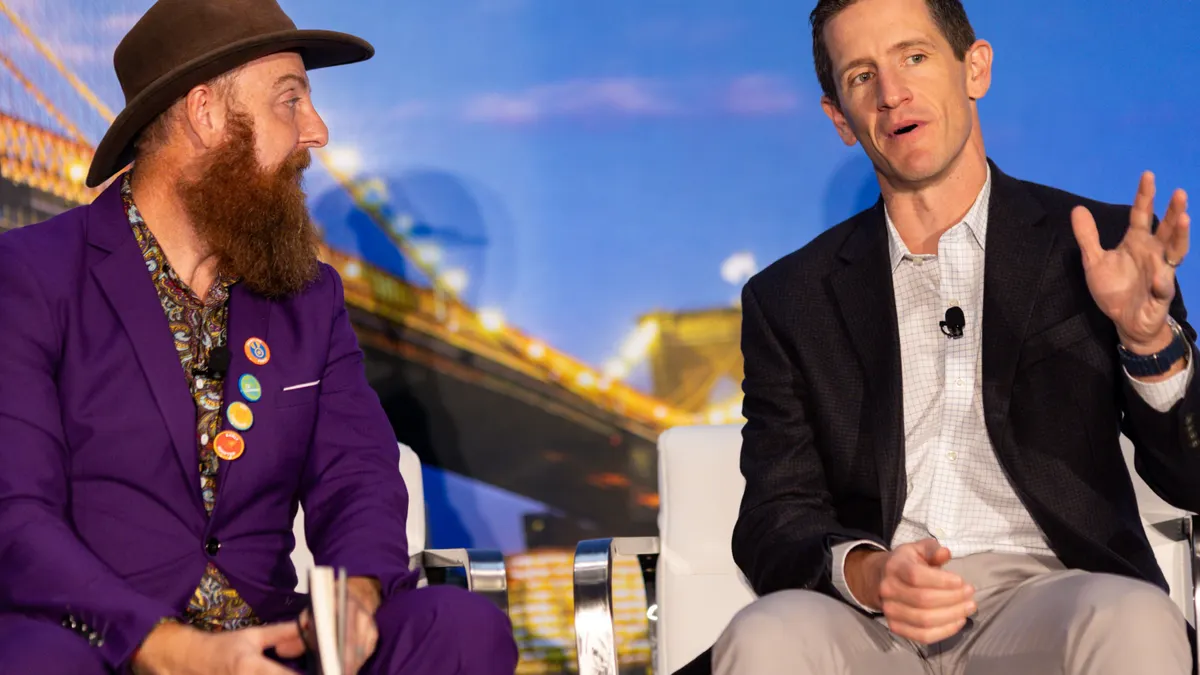Customers haven’t stopped demanding more from the products and services they use. But as CX teams stretch and reshape to meet ever-changing customer needs, economic headwinds and budgetary pressures could slow — if not freeze — hiring.
On one hand, CX team size has recently increased. A Forrester survey of 671 CX decision-makers conducted last year found the share of programs larger than 20 full-time employees jumped from 40% in 2022 to 65% in 2023. And half of respondents said they expect their companies’ CX programs to increase even more this year.
On the other hand, team size might actually stagnate in 2024. Judy Weader, principal analyst at Forrester and one of the authors of the report, said in an email that she expects CX team size to, for the most part, stay flat this year.
Economic pressures have been leading to reductions in force, and the CX function is not immune, she said. Many survey respondents agreed.
“I would expect that the CX teams that are growing will be more the exception than the rule this year,” Weader said, “but those teams will be at firms that understand the financial benefits of improved CX and that are doubling down on their commitment to becoming customer obsessed.”
CX leaders are split on whether teams will grow slightly, or remain the same
Indeed, a larger CX team can indicate a better-resourced CX program. As the function evolves to meet more and more customer needs, headcount is a key way to accommodate the increased workload. And that’s exactly what has happened over the years.
CX used to be synonymous with customer support, Callie DePina, VP of member experience at ButcherBox, said in a statement. The subscription-based meat delivery company was founded nine years ago and, at the time, its holistic take on CX wasn’t the norm.
“Not only has the scope of CX teams expanded, but the cross functional footprint of the team has too. CX must work with marketing, merchandising, procurement, brand, and so many other teams to help them understand their role in a customer’s journey so that the experience is cohesive and fulfilling,” DePina said.
CX turns central
Additional responsibilities aren’t the only driver of CX team size, however. According to Weader, how the function aligns within the wider organization can also impact headcount.
In many cases, CX originated within a specific department, such as marketing or market research. Now, as CX leaders ascend the corporate hierarchy, they’re able to make the case for a more centralized function. In some cases, Weader said, that could play out as a tighter alignment between back-of-house CX and delivery-side CX.
Amory Somers Vine, CX director at global managed services company Expereo, agreed. Standalone CX functions are becoming rarer.
“Organizational commitment to CX has accelerated in today’s fast-paced, hyper-connected world, because business leaders understand that delivering an exceptional, memorable customer experience at any given moment is vital to staying competitive and nurturing long-term customers. To achieve this, CX is being embedded across the entire business, not just in one department,” Vina said in a statement.
The ideal size and scope for a CX team depends on a company’s unique needs. The Forrester report found companies with more than 5,000 employees were more likely to have CX programs with 50 or more full-time employees than those with fewer overall employees.
Roughly a third of CX programs have between 11-30 full-time employees
But there are more factors at play. Weader said she’s seen large CX teams have success, but it has more to do with the company’s CX ambitions and CX leaders’ abilities to generate return on investment.
CX takes a technical turn
Technology also makes a difference. DePina mentioned that artificial intelligence will play a longer-term role in how CX teams optimize. Andrea Mulligan, chief customer officer at guest engagement platform Paytronix, said generative AI could be a “game changer.”
“2024 will be a year of experimentation and refinement,” Mulligan said in a statement. “We may find that we continue to grow our CX teams to keep up with current business growth rates, but the goal is to quickly shift to a model in which the growth of the CX team is not directly aligned with the growth of the business. Some businesses will get there faster than others.”
But each organization has different missions that will determine team size.
“The CX team’s size and scope need to align with what the firm needs to be successful at delivering on that ideal CX vision,” Weader said. “Once you know what needs to be done and how to perform that work to achieve optimal outcomes, you can right-size the skills and people to work.”


















